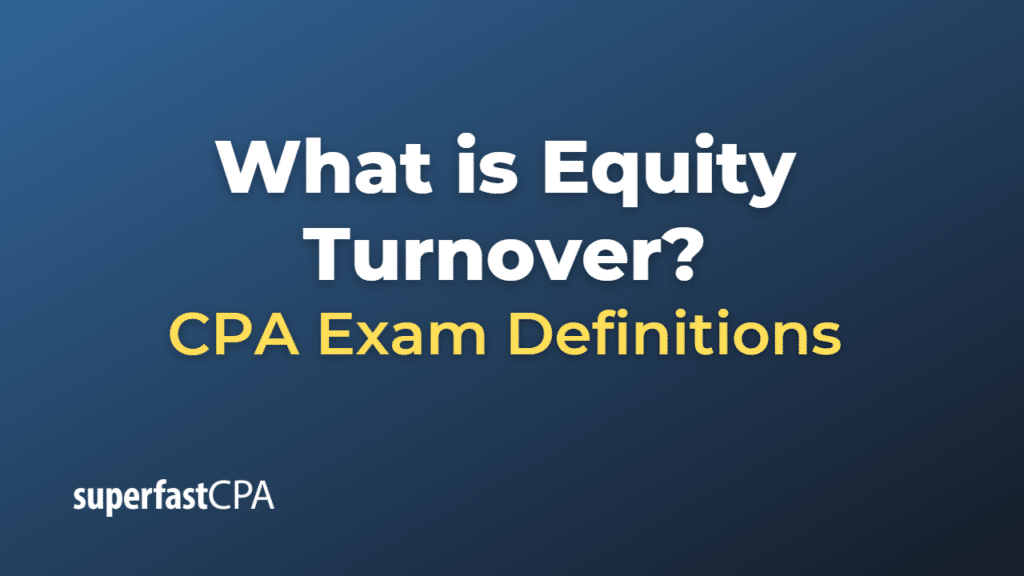Equity Turnover
Equity turnover is a financial ratio that measures the value of a company’s sales or revenues relative to its equity. It indicates how effectively a company uses its equity to generate revenue, and it can be especially useful for comparing the performance of companies within the same industry.
The formula for equity turnover is:
\(\text{Equity Turnover} = \frac{\text{Sales}}{\text{Average Shareholders’ Equity}} \)
Where:
- Sales is the total revenue of the company during a given period, typically a fiscal year.
- Average Shareholders’ Equity is the average value of the company’s equity over the same period. It’s usually calculated by adding the equity value at the beginning and end of the period and dividing by two.
A higher equity turnover ratio can indicate that a company is effectively using its equity to generate sales. Conversely, a lower equity turnover ratio might suggest that a company isn’t efficiently using its equity. However, what is considered a “good” or “bad” ratio can vary depending on the industry, as some sectors require more assets to generate sales than others.
It’s important to remember that the equity turnover ratio is just one of many financial metrics used to evaluate a company’s performance and should be considered in the context of other ratios and information.
Example of Equity Turnover
Suppose we have two companies, Company A and Company B, both operating in the same industry. We want to evaluate their efficiency in generating revenue from their equity.
Let’s say that:
- Company A has total sales of $10 million for the year. The equity at the start of the year was $20 million and at the end of the year was $30 million. So, the average shareholders’ equity is ($20 million + $30 million)/2 = $25 million.Therefore, Company A’s Equity Turnover = $10 million / $25 million = 0.4 times
- Company B, on the other hand, has total sales of $15 million for the year. Its equity at the start of the year was $15 million and at the end of the year was $25 million. So, the average shareholders’ equity is ($15 million + $25 million)/2 = $20 million.Therefore, Company B’s Equity Turnover = $15 million / $20 million = 0.75 times
From these calculations, we can see that Company B has a higher equity turnover ratio. This suggests that Company B has been more efficient at using its equity to generate sales, at least in this particular year.
This is a simplified example, and in reality, it’s important to look at more than just one financial metric to fully understand a company’s performance. It’s also crucial to consider the company’s industry, as some industries naturally have higher or lower equity turnover ratios due to their business models.













